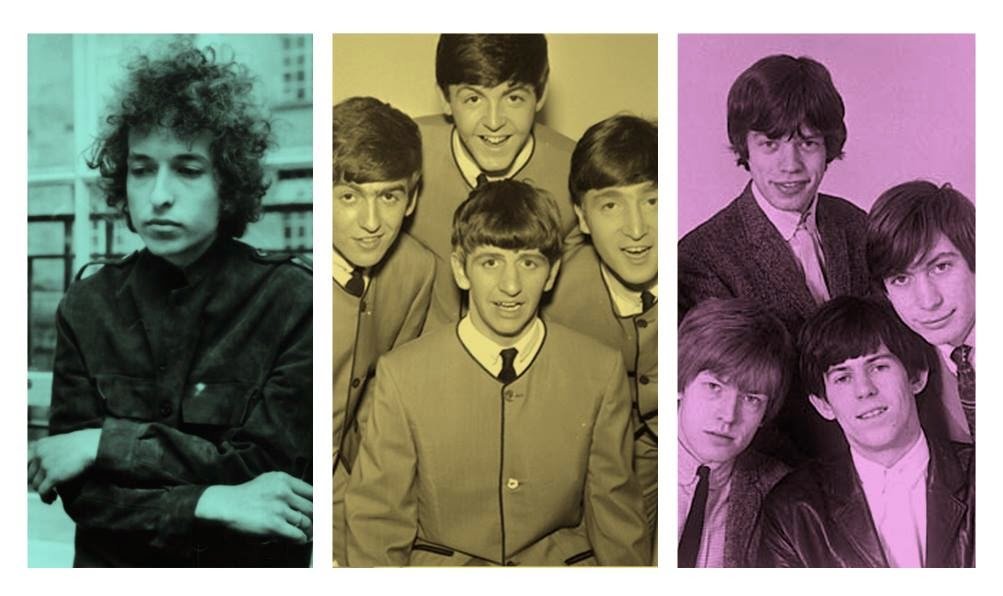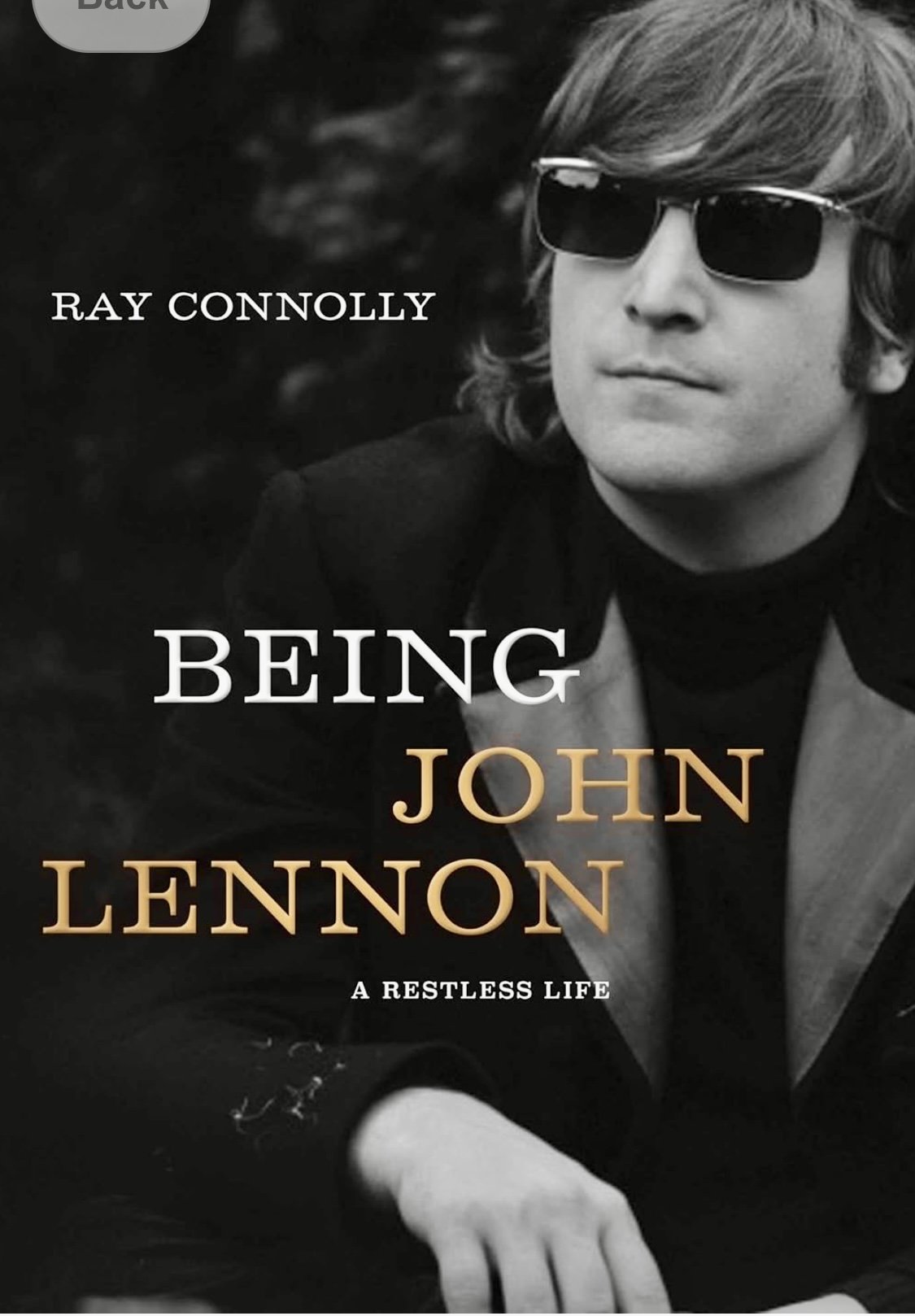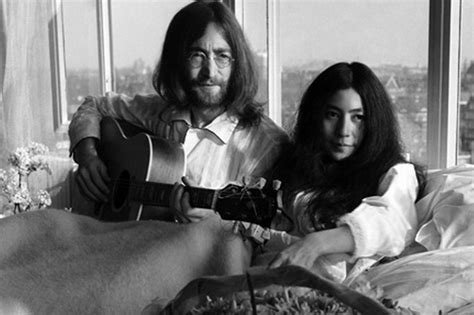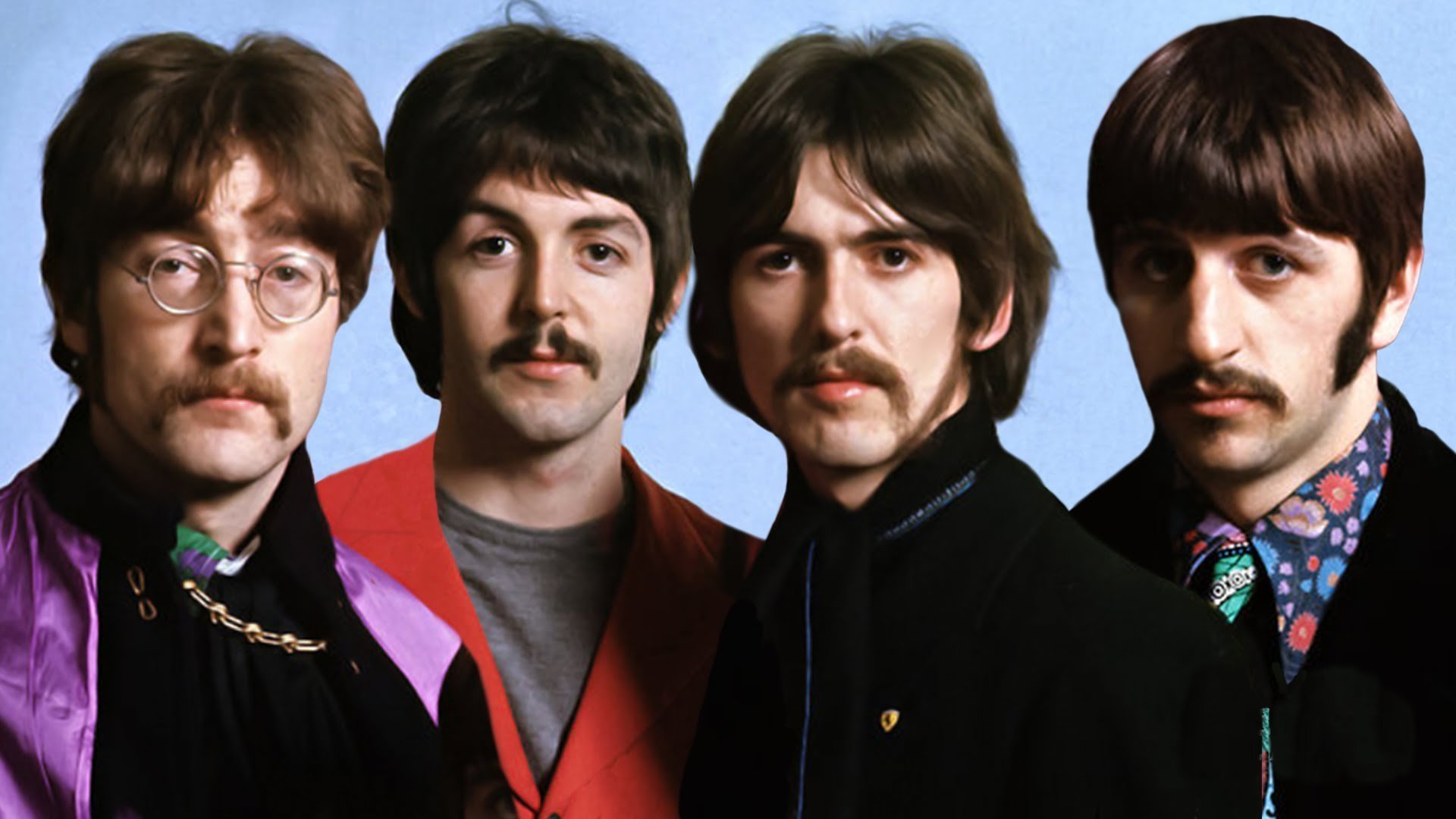For my video podcast, click here:
Following is an off-the-cuff synopsis of the Rolling Stones story based on my reading of the book by Christopher Sandford. Since it’s based on memory only, I acknowledge there may be some flaws in my interpretation, but keep in mind this is an overview of the band’s personalities and contributions over a long period of time, not a reflection of who and how they were necessarily at any given moment in their long history. For that level of granular detail, I highly recommend you read the book!
I want to preface this podcast discussion by saying that there are a lot of important people I’ve left out of the story. There’s Ian Stewart, an early band member who played keys and added a significant bluesy dimension to the band. There’s Andrew Loog Oldham, their first significant manager and promoter, who incidentally told them to not include Ian Stewart as a visible member of the band due to his looks. And many many others who are not discussed in my podcast. Here, my focus is on the band members who were most visibly and significantly part of the lineup of the band, as well as the greatest contributors to the sound and image of the band.
Hello and welcome to my podcast YouTube channel. Today I'm going to talk about the book that I read, The Rolling Stones by Christopher Sanford, which I actually recorded a couple of days ago, and that's a spontaneous discussion of the book, what I remember about it, what I think the important features of the book are in terms of the story of of the gentlemen that you see behind me, where, there we go, but I want to start, I want to preface this by relating a legendary story about the foundation of the Rolling Stones, which I mention in my discussion, but don't really go into detail. So here it is, and this is from a website called Midnight Trains.
“A train platform, Mick Jagger, Keith Richards, 17 October 1961, the day the Rolling Stones were almost born. This time the story starts around 25 kilometers from central London. Welcome to Dartford, a town of 80,000 inhabitants nestled in the Kent countryside.
“Like many towns of its size, Dartford has a river, a church, a main park, and industrial areas. Oh, and a train station, where services have been running to and from since 1849. It was also the place where one particular meeting around 60 years ago was to alter the course of world music history.
“October 17, 1961, among travelers passing through are two young handsome guys who run into each other on Platform 2. They're 18 years old, their whole lives ahead of them. The first goes by the name Michael Philip Jagger, the second Keith Richards, and it's the latter who told the story of their meeting best in a letter to his aunt a few months later. You know, I was keen on Chuck Berry, and I thought I was the only fan for miles.
“But one morning on Dartford station, I was holding one of Chuck's records, when a guy I knew at primary school, seven to 11 years, you know, came up to me. He's got every record Chuck Berry ever made, and all his mates have too, and they are all rhythm and blues fans. Real R&B, I mean.”
Then he goes on to name some of the names, including blues men like John Lee Hooker, Muddy Waters, Howlin' Wolf, Jimmy Reed, and Bo Diddley. “Anyway, the guy on the station, he's called Mick Jagger. The two guys get to talking, having recognized each other.
“Turned out they had very similar upbringings and acquired pretty much the same interests too.”
So the story goes on, but you get the point. This is the fateful meeting in 1961 between founding Rolling Stones band members Keith Richards and Mick Jagger, who back then went by the name of Michael.
And this is the legendary founding story. But as the book relates, and as you'll learn if you really get to know the story of the Rolling Stones, like a lot of foundation stories, it's kind of a mythology as well, because certainly Keith Richards and Mick Jagger coming together was a quintessential part of the Rolling Stones legend. But it was really Brian Jones who was the driving force in the organization of the band at the beginning.
Brian Jones, amazing, versatile musician, quintessential blues man who brought together the band members for the first time. And so this is the story that I wanted to relate. And I was thinking, you know, Mick Jagger and Keith Richards came together.
It was almost like kismet, right? We think of it as an act of fate that they were just destined to come together. They were two boys from Dartford. They shared common interests in blues and rhythm and blues.
And they were kind of part of this very small community of young men in that area who had this interest, came together. And they were, as I relate in my video, and as the book that I'm talking about relates, they weren't exactly opposites, but they certainly were very different personalities with very different strength sets that complemented each other. So you could almost think of them as positive and negative ends of the battery, right? So positive and negative charges that came together and kind of locked in together and stayed together for over 60 years.
That's the amazing aspect of the story of the Rolling Stones. And maybe Keith was the positive charge with all the energy of the rock and roll energy. Mick was the negative charge. He had kind of a feminine mystique to him, which I'll talk about in the video. And then they came together with Brian, who also I think was a positive charge. That may explain why Keith and Brian couldn't quite click and were at odds quite often.
So Keith and Mick really formed a strong bond and a strong partnership. But Brian was kind of pushed away for a number of reasons, which I'll discuss in this video. So I just wanted to preface the video with these points and this story.
And now here's my video:
Good day everybody and welcome to my channel. I'm coming to the late realization that even though this is a YouTube channel, it kind of functions more like a podcast.
There's not a lot of visuals to go with my spiels and it's kind of more in the line of a podcast. I don't assemble a lot of visual material to show you, although I do occasionally do that. And it's also kind of a blog as well.
So it kind of fits with my blog site, which I've been keeping up for almost 20 years now, which used to be a lot more China focused. And now it's kind of branched out to cover a lot of my other interests. But these days I'm kind of using it to focus on my musical projects, namely, you know, getting to know certain eras of music and certain bands a lot better.
And that includes, well, I already know the Beatles quite well, although there's still always more to know as that wonderful podcast, Something About The Beatles, always shows us that there are so many different facets of the Beatles to know about. And I've also been working on a Bob Dylan project, getting to know Bob Dylan, his music and his story better. And then finally, I'm working on the Rolling Stones.
I've been doing a lot with the Rolling Stones this year, reading more about them, getting to know their story better and learning more of their songs. I think I have 50 plus songs up on my YouTube channel now. Sorry, I'm a little tired. It's been a long day. I've been outside filming most of the day for another project unrelated to these. But, you know, you could say that it's kind of a personal passion of mine, but it is related to my profession of being a writer and an author and a historian and perhaps a little bit of a journalist of rock and roll here in China.
And I think that if there's one band that stands up there with the Beatles in terms of its overall impact on the world of music, in terms of its longevity and the classic nature of the band as we look back on it on the band 60 years from now, it's definitely the Rolling Stones. And so today I want to talk about this book, The Rolling Stones by Christopher Sanford. And I think this book is in the category of if there's one book that you're going to read about the Rolling Stones, this should be the book.
If you really want to dive deep into their story, if you want to learn more about the band and its various formations, the different eras that the band went through, the different dramas that the band members themselves went through, how they, you know, the evolution of their musical style over 60 years, this is the book to read. I can start by talking about what I think its greatest strengths are, and then I can talk about some of its weaknesses as I see it. But overall, this was just a wonderful read, a fun read.
The writer, Christopher Sanford, is a good writer. He brings them to life. He tells a lot of very interesting stories. His language is full of humor and pathos. And it's just a great deal of fun. It did take me a while to get through it.
I kind of read it in dribs and drabs. And then, as with a lot of books I read, you know, it started reading it here and there in a patchy way, and then gathering momentum over time. And I would say the last 300 pages of the book, I kind of whizzed through. So yeah, there are almost 500 pages to this book. So it's a big book. It's a long book.
It's divided into several chapters, 11 chapters in all. So the chapters are very long. They're like 50 or 60 pages each. And each chapter covers, I would say, one specific period in the history of the Rolling Stones. So it starts out, of course, with their formation in the early 1960s, and tells a very detailed story of the formation of the Rolling Stones, and then kind of goes era by era into the different phases that the band went through, also in different formations. But basically, you know, you can say that the band started out with these five young gentlemen.
And I think that it's fair to say that Brian Jones was the instigator who, you know, the, you could say the original genius behind the formation of this band. I think that's fair to say, even though, you know, a lot of attention is given, of course, to Mick Jagger and, and I would say secondarily, Keith Richards. They emerged as the two main songwriters of the band.
I would say they, they put the most distinctive voice into the band, of course, Mick Jagger on vocals, Keith Richards on guitar. Is it lead guitar? Well, he kind of plays a combination of lead and rhythm, but he's really known as the riff man. He comes up with those incredible riffs that we know and love today, 60 years after he invented so many of them.
And of course, he didn't totally invent them. He pulled them out of the treasure house of, you know, rock and roll, blues, all those influences that they had when they were young. So let's compare it.
Let's start by comparing the legend of the founding of the Rolling Stones, which is that Keith and Mick, they were both Dartford boys. I haven't been to Dartford, England, but it's a smaller city, not too far from London, I believe. Although I'd have to check, bone up on my British geography.I have to get there someday. I've been to London, but I haven't explored much of the rest of England. And I would love to go there and and see all these places firsthand.
But anyway, so they were both Dartford boys, Keith from a more working class background, Mick from a slightly more middle-class background, definitely well-educated, did well in school, went to the London School of Economics, was kind of on his way to becoming maybe an accountant. And that partly explains the success of the band that Mick always had the strongest business head in the group. Keith was more of a working class background.
He was, you know, probably rock and roll was his savior. He might've taken on some sort of blue collar job otherwise. Behind them, you have Charlie Watts, the drummer who, who joined them pretty soon after they formed as a band.
Brian Jones here in the forefront, who was, as I said, kind of the musical genius behind the formation of the band, a real blues master, master of multiple instruments. If you watch any videos of the Rolling Stones, from the mid to late 60s, before he left the band, you know, he's always playing exotic instruments like the dulcimer, others, the sitar. He lent a certain flavor to the sound of the band.
And I would say that at the beginning, he was the driving force because he was the one who advertised for the band, got others to join. But he didn't have the personality to really be the band leader in the long run. He had some fatal flaws, which we'll talk about.
And then we have Bill Wyman, whose original name was Perks, Bill Perks. And he was also from a very working class background, a family of six [children]. He was the oldest son in a family of six [siblings].
I'm actually reading his book, Stone Alone now, and it's a wonderful book, highly recommend it. That might be my next blog slash podcast slash YouTube video when I get it, finish it. But anyway, Bill Wyman, changed his name to Wyman.
He, he was kind of trained as a child in, in various instruments, especially piano, ended up playing bass for the Stones. So you had the back end, Charlie and Bill, who were a little bit more low key, as befits a back end of the band. And then you had the three front men.
And this eventually led to some conflict, partially because Brian Jones himself was such a flawed individual. And even though he was a very charismatic individual, and, and like I said, real musical genius, he had some fatal flaws that we'll talk about. I suppose so did Keith and Mick and their ways, but, but Mick, I think always held himself together.
That's one of the, one of the things you learn from reading their story, reading this book is that, you know, despite some of his flaws, which were more character flaws, you could say, he really held it together. He didn't indulge in the excesses that his bandmates did. And he kind of kept a business head throughout the entire journey of the Rolling Stones.
I would say, you know, of the individuals that comprised the Stones, Brian and Keith were, were both musical geniuses in different ways. But they were both erratic individuals. They were pugilistic. They got into a lot of fights. They also had serious problems with drugs and alcohol. Keith eventually conquered his drug problems many decades later, but continued to consume alcohol.
Whereas I think Bill and Mick were somewhat more temperate in their consumption of various substances, whereas Charlie avoided that altogether. It seems like he didn't really indulge in drugs. He did maybe drink on occasion, but, you know, you have sex, drugs, and rock and roll, the triumvirate of rock bands.
The three cornerstones, the three pillars of a rock band, sex, drugs, and rock and roll, Charlie basically eschewed the sex and the drugs part and kind of, and even rock and roll for him was a job. He was much more excited about jazz and he continued to play, listen to, watch, play, and perform jazz through, throughout his life. So for him, the rock and roll was kind of his job, his nine to five job.
Obviously he was an incredible drummer, who made a great contribution to the sound of the band. But he avoided the pitfalls of the rock and roll lifestyle, was married over 50 years to the same woman, obviously, and had a monogamous lifestyle, which is an incredible feat for not only just any average rock band member, but a member of this band dubbed the greatest rock and roll band in history. And I think there's a lot of credence to that.
I think they were in many ways the greatest of all the rock bands that came out of the 1960s era. We can talk a little bit later and make comparisons with the Beatles, but for now let's just stick to the Stones and their story. So you had these five individuals, each with their strengths, each with their weaknesses.
Again, Mick didn't abstain from drugs, but he was certainly a lot more temperate and he was able to keep control over them a lot more than his than his two bandmates, Brian and Keith, who were much more excessive, you could say, in their abuse of drugs and alcohol. And that did get them into a lot of trouble, both in terms of their relationships with other people, but also in terms of their emotional health and wellbeing. It eventually led to Brian's untimely and very unfortunate death in 1969, July 2, I think is the date that I recall.
I'm doing this off the cuff. This is not, I don't have a script for this, so I'm just doing it by memory, but I think that's a good way to, to talk about books because sometimes it's the things we remember about them that are the most important, not the facts that we kind of assemble and gather from them. But Brian's untimely death in July, 1969.
Keith nearly escaped death multiple times. He really is an amazing individual. And in some ways I think has to be my favorite member of the band. Although, I think it's fair to say that he continued through most of his life to wrestle his demons and that made his life very difficult in ways.
And also, like I said, he escaped death many times, but not only that, I mean, and this is something that the book goes into some detail. They also got into a lot of trouble with the law in various countries, particularly their home country. They got into trouble with the police and with the law.
They were in and out of court, particularly in the earlier days, notoriously in the late 1960s, there were some famous drug busts, like the bust at Redlands where Keith eventually settled, one of his homes. And so quite a lot of the story in this book is about their dealings with the law and with the courts and with the police. But miraculously they never went to prison for a lengthy amount of time.
They seem to manage to continue. They were almost like Houdini's escape artist. They seem to continually escape the prison sentences that they were subjected to and managed to get off quite lightly.
But in terms of the effect that the drugs had on them, as I said, the emotional impact, but also the physical and the health impact was very severe.
Bill tells his own story in Stone Alone. I think, um, we can kind of safely say he was an older member of the band.
He was pushing 30, I believe, when the band started up [late 20s]. So he was born in the 1930s, I want to say 1936. He has a lot of memories of World War II, which the others don't because they were all born in the early 1940s around the time of my parents.
So like 1943 or so, I don't remember their exact birth dates, but they were all born in the early 1940s, whereas Bill Wyman was born in the 1930s. So he was much older than the rest of the band. And I think that affected his relationship with the band.
He was a little bit more distanced from the core members of the band, certainly age-wise and behavior-wise. If he had one significant vice, you could say it was womanizing, which was kind of, you know, endemic to the band as a whole, except for Charlie, of course. Charlie was the notable exception, but the other four band members certainly indulged in their love of the opposite sex.
But I think Bill was especially notorious in this regard and kept a log of all the women that he slept with over the years and had wives, but also many, many girlfriends and many, many one-night stands. And, you know, you can imagine with ladies throwing their underwear at the band every time they performed, you can imagine the shenanigans that they got into. And some of that is detailed in this book, but I'd say that it takes a kind of, if not a respectful tone, then at least a somewhat subdued tone.
There's not a lot of graphic imagery in the book. It certainly isn't sexually explicit, but it does describe some of their liaisons, especially their more famous liaisons with the women in their lives. But getting back to these three members, who I think were kind of the front, the face of the band, and, in a way the chief architects of the sound of the band.
That might be a little bit unfair to Bill and Charlie, but they were certainly coming up with the special style and sound, and they were writing the licks and the lyrics. So I think it's pretty safe to say that they were, you know, especially Mick and Keith were the two chief songwriters, whereas Brian was kind of more of a sound man. He, very early on, it was determined that he was not going to be the songwriter.
He may have contributed a few songs at first, but his material just wasn't up to snuff. And so it was Mick and Keith who turned out to be the Lennon and McCartney of the Rolling Stones. And there is a bit of an analogy there [with the Beatles], but there wasn't really a George trying to kind of write his own songs and be a part of the songwriting team in the way there was with the Beatles.
So I think it was mostly Mick and Keith who were penning the songs, who were coming up with the lyrics and the basic melodies and the song forms, and the others were supporting them, which I think was one of the many factors that grated on Brian. He obviously, you know, the story details this, he obviously developed a grudge against, especially Mick and Keith, and it was mutual. It seems that over time, Mick and Keith tended to keep Brian kind of out of the works and he felt continually alienated, and he was already susceptible to the excesses of drugs, alcohol, and women.
So I think this drove him just deeper into that morass, you could say. So over time, Brian became more and more alienated from the rest of the band, and he demonstrated his, his bad feelings, his anger and his frustration, in many harmful ways, especially in his relationships with women. So he tended to be very abusive towards the women that he was intimately involved with, and that also further alienated him from the other band members, especially Keith.
So there's the famous incident with Anita Pallenberg, who's one of the famous Stones women, who at first was with Brian, but after his continual abuse of her, Keith kind of moved in and started a relationship with her. That became very significant and serious. Unfortunately, Anita had some, you know, if Keith had serious drug problems, Anita's were even worse.
So even though they were married, had children, eventually, she just proved too much for even Keith. So there's, you know, in addition to the story of the Stones themselves, you get the stories of their supporters, their, you can say their hangers-on, their women, their assistants, other band members. Of course, later, after Brian left the band, around 1968, ‘69, he left the band and then died under somewhat mysterious circumstances in a swimming pool accident in his home, which are not entirely resolved.
I think there's still a bit of mystery and still a bit of questioning about the nature of his death, but it was basically ruled as, you know, an accident, if not a suicide. I think some people thought it might've been suicidal, but certainly it was suicidal in the sense that he overdid it with drugs and drink that night and ended up drowning in a very warm pool. You know, over the years, people have had different theories about that.
But anyway, so Brian was out of the picture by 1969 and eventually they hired a young guy, a real guitar ace named Mick Taylor, who took over for a while. And later in the mid-seventies, Ron Wood came into the picture. He'd been with the Faces, uh, with Rod Stewart and, you know, he didn't have the chops of Mick Taylor. He wasn't maybe a first rate rock and roll guitarist, but he kind of had the zeitgeist of the Stones. He looked like a Stone.
He had that gaunt look, and he certainly kind of acted like a Stone, and he fit right into the band. He just gelled well with the band, so he remained a steadfast band member for decades to come. But that was in the mid-70s.
So in the 60s, it was these five gentlemen, then Mick Taylor replacing Brian Jones. And that continued basically, and then with Ron Wood coming in and basically replacing Mick Taylor eventually. Those are the core members of the Stones.
And I'm thinking it was in the ‘90s that Bill Wyman retired [1993]. Again, he was much older than the other Stones. He had his own interests. He was a very interesting guy. I mean, he had so many personal interests. He was kind of a historian and archivist for the band.
Obviously, he was interested in women, which comes out in the story as well. But I think he just decided that he had had enough of the touring and all of the drama surrounding the recording of the new albums and so on. He just decided to retire out of the band.
But these are the core members, for sure. And you could say that the jet propulsion of the band was, again, Mick and Keith. So in terms of their relationship, I certainly learned a lot from reading this book that I wasn't entirely clear about before.
I knew that Mick and Keith had had some falling-outs over the years, over the decades. But one of the big questions, of course, that you ask when you read about the Rolling Stones and their story is how did they last so long? So many other bands broke up or retired in their middle age. They went off to raise families, have children, have grandchildren.
The Rolling Stones continued pretty much straight on from the ‘60s into, well, today. And that is truly an amazing story. So what do we learn from this book about their longevity? I mean, one of the arguments that people make is Mick.
Mick was the driving force. He was certainly the calculating mind behind the band's success. He aimed for stardom. He aimed for international recognition. He aimed for popularity. He wanted number one hits.
I think Keith was more content to play in a dirty rock and roll band. That was his zeitgeist. He didn't care about perfection. He made a lot of mistakes, especially later on in later years, especially when playing live. But that didn't really matter. It was the spontaneity. It was the energy and the drive of playing in a rock and roll band. Maybe Keith is the greatest bar band musician on the planet. Whereas Mick Jagger really wanted fame and fortune and everything that goes with it. He wanted to be internationally known. He wanted to hobnob with elite society wherever he went. And he also was a dance man.
Keith was a rock and roll riff. Keith was the riff man. Mick was the dance man.
So Mick's greatest strength was his dancing ability. He wasn't the greatest singer. I mean, I think everybody kind of understands that. He wasn't the greatest singer in the biz. He could certainly sing well and he got his emotions out and he had some wonderful style. But not the greatest crooner in the history of rock and roll for sure.
But he kind of made up for it by being one of the great dancers in rock and roll history. So he learned from James Brown. He learned from all these great black American performers.
He studied their steps very carefully. He continued, you know, a big part of his performance training for a live performance was working out, was working on dance steps, kind of like a white Michael Jackson, if you will. He really, that was a huge part of his act.
And not only the dancing, all the outfits that he wore over the years, the leotards and the pink outfits and the day glow colors, he really wanted to be seen. He wanted people to see him as kind of part of this spectacle of rock and roll. So in that sense, he was a driving force in the band's image.
But he also was, like I said, kind of the chief accountant of the band. He was the guy who made the business deals. He was the guy who kind of stayed sober long enough to work with the various agents and the various and the organizers of concerts and festivals.
And he was really into the commercialization of the bands. So making money off the name of the Rolling Stones, off their image, all the merch that they sold during their concert tours. He kind of threw himself into the commercial side of the music, whereas Keith was kind of more... Keith, on the other hand, kind of built up his image over the years.
So it started out as a bit of an ingenue in the early years, but kind of very quickly morphed into this sort of piratical figure, notorious for his excesses of booze and drugs. Kind of not as much of a womanizer as perhaps as Mick or Brian or Bill. He was more like, you know, he had a steady woman.
He was married. He had children. He really loved his mom, his family, his children.
Had those problems with drugs and alcohol that blew up on occasion. But he was kind of, in some ways, a more conservative figure in the band. But he developed this kind of piratical persona.
He liked to pick fights with people that he didn't agree with. He could get violent at times, or at least threaten violence. He kept a bowie knife around. He might break a bottle and threaten to, like, slash you with it. But I don't think that he actually violently attacked and wounded people. So it was kind of more the threat of violence was part of his persona.
And eventually he became more and more so piratical that he appears in the film Pirates of the Caribbean, I think at least twice, as the father of the Johnny Depp character. So, you know, he developed his hair, his putting hooks in his ears and things and rings in his nose and, you know, all of his particular style as a rock and roll god. Because these were the gods of rock and roll.
There's no question. I mean, they were worshipped. They came up with some of the best riffs in the history of rock and roll and some of the best songs.
But I think it's safe to say that their greatest songs were created somewhere between the ‘60s, I would say mid to late ‘60s and the early ‘70s. Those are their most memorable songs. Those are the songs that would be demanded by audiences for decades afterwards.
So they would always play Brown Sugar until, I guess, it became so un-PC that they couldn't really play it anymore. Because, you know, the lyrics are, if you listen to the lyrics in today's world, they will make you blanch and more. But Brown Sugar was one of their classic tunes.
Miss You, which came a little bit later in the 70s, kind of part of the disco movement, with that wonderful harmonica bit by Sugar Blue, our friend in Shanghai, Sugar Blue, who is mentioned in the story as well. They also would continue to play songs like Satisfaction. Sometimes You Can't Always Get What You Want, but I think that one is a little more operatic, a little harder to play in concerts with the choruses and everything.
But Satisfaction, for sure. Jumping Jack Flash was always a big hit. So they had their staples, but they were all songs that they had created in the 1960s or in the early 1970s.
So they did continue to make albums in the ‘80s and the ‘90s, 2000s, all the way up to the present decade. But I think none of those songs had the street cred of their songs from the ‘60s and ‘70s. So they would always go back to their classic songs, which I think is a typical pattern of rock and roll bands from the ‘60s and ‘70s, is that that was their touchstone era.
And even though they may still be rocking and rolling today at the age of 80-something, which is unbelievable, they go back to those songs. Everybody wants to hear Paul McCartney play Blackbird, Hey Jude, Let It Be. They don't really want to hear his later stuff as much.
And so the same is true with the Rolling Stones. So in this book, it does catch up with them up until the year 2021. So it keeps au courant for six decades, which is quite an amazing achievement for the book itself.
Just going back to Keith and Mick's relationship, I think, which was the core of the band. After Brian fell out of the picture, it was really Keith and Mick and their relationship that was the barometer of the health of the band. Because Charlie would always show up to do his job, Bill was steady, kind of in the background.
It was really up to Keith and Mick to keep the engine of the band revving, keep writing new songs, recording new albums. I think the amazing thing about their story is that they continued to do so for over six decades, despite all the differences they had over the years and all the conflicts they had and all of the emotional dramas that they went through as a couple. You know, the book mentions many times that they were like an old married couple, at least by the 1970s, they were kind of in that pattern.
They knew each other so well. They knew each other's great strengths and great flaws, and each had such a distinct persona. Keith kind of wanted, as I said, wanted to stay the course of rock and roll.
Rock and roll was the core of the band. It was rooted in blues. It was a dirty sound that he wanted to go for, whereas Mick, he really got into the disco era, you know, and he had all these collaborations with other artists over the years, which I think made Keith kind of jealous.
I think Keith was kind of the jealous husband in the couple, and Mick was sort of the flamboyant wife, could we say? Mick definitely took on a more female persona in the relationship, and in his, just in his image, he would wear kind of feminine clothing or androgynous clothing. He would act androgynously. He would wear makeup, whereas Keith had kind of the more masculine image, for sure, and at one point, Keith even started calling Mick “Brenda.”
That was his nickname for Mick, so he even kind of feminized his partner, and I think Mick was maybe oblivious to that, but maybe a little bit okay with it because he was the one who sort of took on this more feminine identity in the band, but obviously, you know, each of these partners brought their great strengths to the music making, but also some weaknesses, but they kind of balanced each other out, and there were periods when Keith and Mick were at odds and just couldn't work together, but eventually they would get back, and the other amazing thing about the story is that over the decades, their brand accrued so much power that they just kept earning more and more money. I mean, the book gives the records, but they were just earning hundreds of millions of dollars for every new concert tour that they went on, and these are guys who were, you know, in their 50s and their 60s, then in their 70s, now they're in their 80s, so in a way, they've earned that, although I still think it's kind of absurd, but they just kept making more and more money and forming more deals with the ticket sellers and with the promoters and with all the merch and all the side deals, and they would sell their music to commercials, and, you know.
So they were very savvy, and you could say, again, Mick was kind of the mastermind, the financial mastermind behind the band's success, and the others kind of rode along with that. But I think Keith would have been happy just playing with a dirty rock and roll band in a bar somewhere, but kept finding himself on these big stages and arenas traveling around the world playing to sold-out concerts, which would sell out within minutes, so it really is an unbelievable and quite unique story in the history of rock and roll and popular music.
So I think I've said enough. I mean, all the details are in [the book]. They're great details, lots of interviews with, not with the founding members per se, but with, you know, a lot of material drawn from other interviews with them. The author didn't work directly with the founding members or the core members of the Stones, but he certainly had a lot of interviews with people who were close to them over the decades, so a lot of incredible material in the book, and fine-grained detail about their different phases, about the making of their different albums, the concert tours that they went on, their personal relationships with each other and with other people who were significant in their lives.
So yeah, you're not going to get a better book than this. Flaws, I would say, are kind of minor compared to the great strengths of the book, but one of the flaws that I noticed is that the book does get repetitive. I think the author, every time that he updated the book, he didn't go back through it carefully to see, “Have I written this before? Did I write that phrase before? Did I give you this information before?” So I found a lot of repetition, especially in the later chapters that could have been avoided.
So there's that. The tone of the book, overall, I really enjoyed the writing style, but I would say that he tends to trot out the same cliches now and again. So, you know, again, that would just, with some very careful, meticulous editing, I think they could create a better book.
But that said, this is an amazing achievement. I think this is one of the great books of rock and roll history, and I'm so glad that I spent the time to read it. I now know so much more about the history of the Stones, and now I have to kind of back that up by listening more to their albums over the decades, getting, re-familiarizing myself with the different eras that they went through, and especially, you know, listening more to their deep cuts.
Because I find personally, you know, that sometimes it's the deep cuts that really give you the richest material from a band. We know all their hits, right? The classics. But the deep cuts, I think, are what makes, you know, digging into a band worthwhile.
So that's it for today. Thanks for listening. Hope you enjoyed this podcast.
Please feel free to provide comments or suggestions, and definitely, if you haven't done so, make this book a part of your book collection and read it.




























































